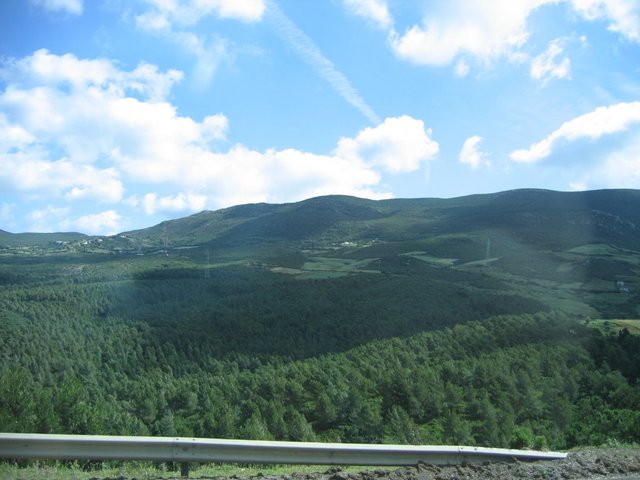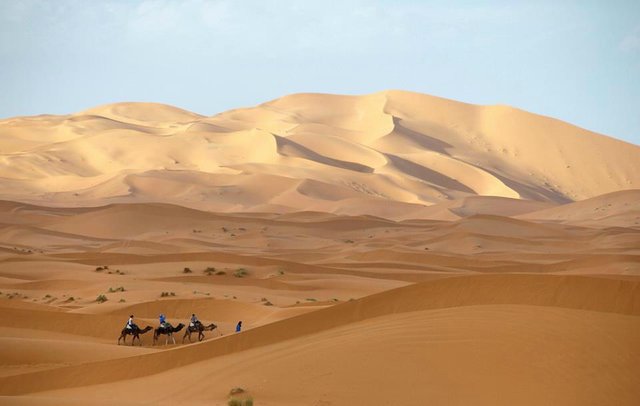Intro to Morocco!!!!
Morocco is a country in the far northwest region of Africa. It borders the Mediterranean Sea on the north and the Atlantic Ocean on the west. About 8 miles across the Straight of Gibraltar, lies Europe and the country of Spain. From Morocco, it’s approximately a thirty-minute ferry ride to the closest point in Europe. What makes Morocco so unique and beautiful is the range of different geographic areas in the country. Fertile plains lie across Morocco’s coasts, with forested mountains along the middle of the country from southwest to northeast. Beyond the mountains resides the Sahara Desert, which takes up a big portion of Northern Africa. With wide mountains ranges, vast deserts, and grassy plains, the landscapes make Morocco an admirable place to live and visit.
The Moroccan landscape is framed by several majestic mountain ranges. Not only do these mountain ranges make for spectacular scenery and change in appearance, they are also home to many traditional ethnic groups who still practice their ancient cultures and beliefs. The Atlas Mountains are located in the central portion of Morocco. The highest peak, Jebel Toubkal with an elevation of 4,167 meters, is in the southwestern region of the country. That peak separates the Mediterranean and Atlantic coastlines from the Sahara Desert. The Atlas Mountains can be broken into different sub-ranges: Middle Atlas, High Atlas, Anti-Atlas, Saharan Atlas, Tell Atlas and the Aurès Mountain ranges. The High Atlas Mountains form the source for many rivers and streams, making it an ideal place to live. The Rif Mountains are another very popular attraction in Morocco. Located in the northern region of the country along the Mediterranean coast, the Rif Mountains are home to Morocco’s major cities due to the fertile soil and forests. Rivers flow from the mountain ranges and make it possible for crops and other natural exploits. The Rif Mountain region receives more rainfall than any other part in Morocco. Along the northern and western borders are coastal areas and beaches. Fertile plains, plateaus and ravines spread back from the coast. These massive plains contain fertile agriculture lands and support around 15% of the local economy. One of the least populated areas in Morocco is the Anti-Atlas Mountain range. This is the shortest, most barren part of the Atlas. Beyond this range lies the endless Sahara Desert, which stretches throughout the rest of the country.  The Sahara Desert is the world’s largest desert and is one of the harshest environments on the planet. At 3.6 million square miles, the Sahara Desert takes up around 30% of the whole African continent. Most people think of Morocco as arid with poor cultivation and no vegetation. Although this is far from reality, the Sahara Desert does fall into that category. It’s true that today the desert is dry and dangerous, but there is proof that it used to be occupied by streams and crops, that made it possible for animals and humans to once settle there. Some areas are still home to a small population but nothing like it used to be. Today, the desert is covered by sand dunes and dry, rocky plateaus. Camels are frequently associated with the Sahara, along with many species of reptiles and rodents. With the exception of the Nile River, the Sahara’s rivers and streams are seasonal and irregular. Travelers visit the Sahara quite often, making it one of the most popular deserts to visit.
The Sahara Desert is the world’s largest desert and is one of the harshest environments on the planet. At 3.6 million square miles, the Sahara Desert takes up around 30% of the whole African continent. Most people think of Morocco as arid with poor cultivation and no vegetation. Although this is far from reality, the Sahara Desert does fall into that category. It’s true that today the desert is dry and dangerous, but there is proof that it used to be occupied by streams and crops, that made it possible for animals and humans to once settle there. Some areas are still home to a small population but nothing like it used to be. Today, the desert is covered by sand dunes and dry, rocky plateaus. Camels are frequently associated with the Sahara, along with many species of reptiles and rodents. With the exception of the Nile River, the Sahara’s rivers and streams are seasonal and irregular. Travelers visit the Sahara quite often, making it one of the most popular deserts to visit.  With the different geographical features of Morocco, there’s a drastic change in climate from the northwest region to the southeast region. In the southeast, the climate is infertile and not very populated. In the northeast, the climate is also hot and similar to what some would call a Mediterranean climate, that receives heavy rainfall in the spring and fall but very little in the summer. The heavily populated areas are in the northeast. Since the country is extremely mountainous, living on the South side where the mountains can be completely different. Oceanic and continental influences have everything to do with the type of weather base. At the top of the Atlas Mountains, it is cold with an alpine climate. But near the bottom of the Rif Mountains it is humid and usually rainy. The Sahara climate is basically constant all year round. Dry and tropical, it receives very little rainfall. In certain parts of the desert, high winds are common and often form sand storms. The climate in Morocco is extremely diverse. When traveling to this country, it would be smart to be prepared for any type of weather.
With the different geographical features of Morocco, there’s a drastic change in climate from the northwest region to the southeast region. In the southeast, the climate is infertile and not very populated. In the northeast, the climate is also hot and similar to what some would call a Mediterranean climate, that receives heavy rainfall in the spring and fall but very little in the summer. The heavily populated areas are in the northeast. Since the country is extremely mountainous, living on the South side where the mountains can be completely different. Oceanic and continental influences have everything to do with the type of weather base. At the top of the Atlas Mountains, it is cold with an alpine climate. But near the bottom of the Rif Mountains it is humid and usually rainy. The Sahara climate is basically constant all year round. Dry and tropical, it receives very little rainfall. In certain parts of the desert, high winds are common and often form sand storms. The climate in Morocco is extremely diverse. When traveling to this country, it would be smart to be prepared for any type of weather.
Morocco is blessed when it comes to natural resources and trade. A very high percent of the country’s population participates in agriculture and selling it for profit. The whole country could feed itself solely on what the citizens grow. Being so close to the Mediterranean Sea and Atlantic Ocean, Morocco is also the largest fish exporter in Africa. In addition to fish, fruits and vegetables, clothing and handicrafts are produced for sale. The chief imports are oil, industrial equipment, and other consumer goods. Phosphate is their most valuable natural resource and accounts for about half of the country’s export income. The nation’s key trading partners are France, Spain, Germany and Italy. Overall, for being a small country with harsh geographical features, their natural resources support a growing community. According to Morocco World News, climate change is a huge issue for the future of the country. Higher temperatures and less rainfall are affecting the locals. Reporters say that people living near the coast people can expect to experience a rise in the sea level, which is a threat to agriculture, fishing, water supplies and the unique ecosystem of the country. The cost of these climate related events is high, so Morocco has teamed up with other African countries to develop ways to adapt better to these changes. In regards to natural resources, climate change has a lasting impact on drought and soil erosion threats. These issues are preventable. If the whole world could act together, it would help countries like Morocco.
According to Morocco World News, climate change is a huge issue for the future of the country. Higher temperatures and less rainfall are affecting the locals. Reporters say that people living near the coast people can expect to experience a rise in the sea level, which is a threat to agriculture, fishing, water supplies and the unique ecosystem of the country. The cost of these climate related events is high, so Morocco has teamed up with other African countries to develop ways to adapt better to these changes. In regards to natural resources, climate change has a lasting impact on drought and soil erosion threats. These issues are preventable. If the whole world could act together, it would help countries like Morocco.
The Sahara Desert is a spectacular location, like the the Atlas and Rif mountains. The climate is a little hard to get used to, but I think that most African countries share harsh weather conditions in some ways. I believe that the population is concerned about the potential climate change and other economic issue that lie ahead. Morocco is a traditional, developing country that has plans to continue growing and improving. Those problems hopefully will not stop them. Morocco is a country with pros and cons like any other area in the world.
bon post , mais c'est mieux d'écrir en arabe , et merci pour le tag @morocco
Ok thanks for the feedback!
Ok thanks for the feedback!